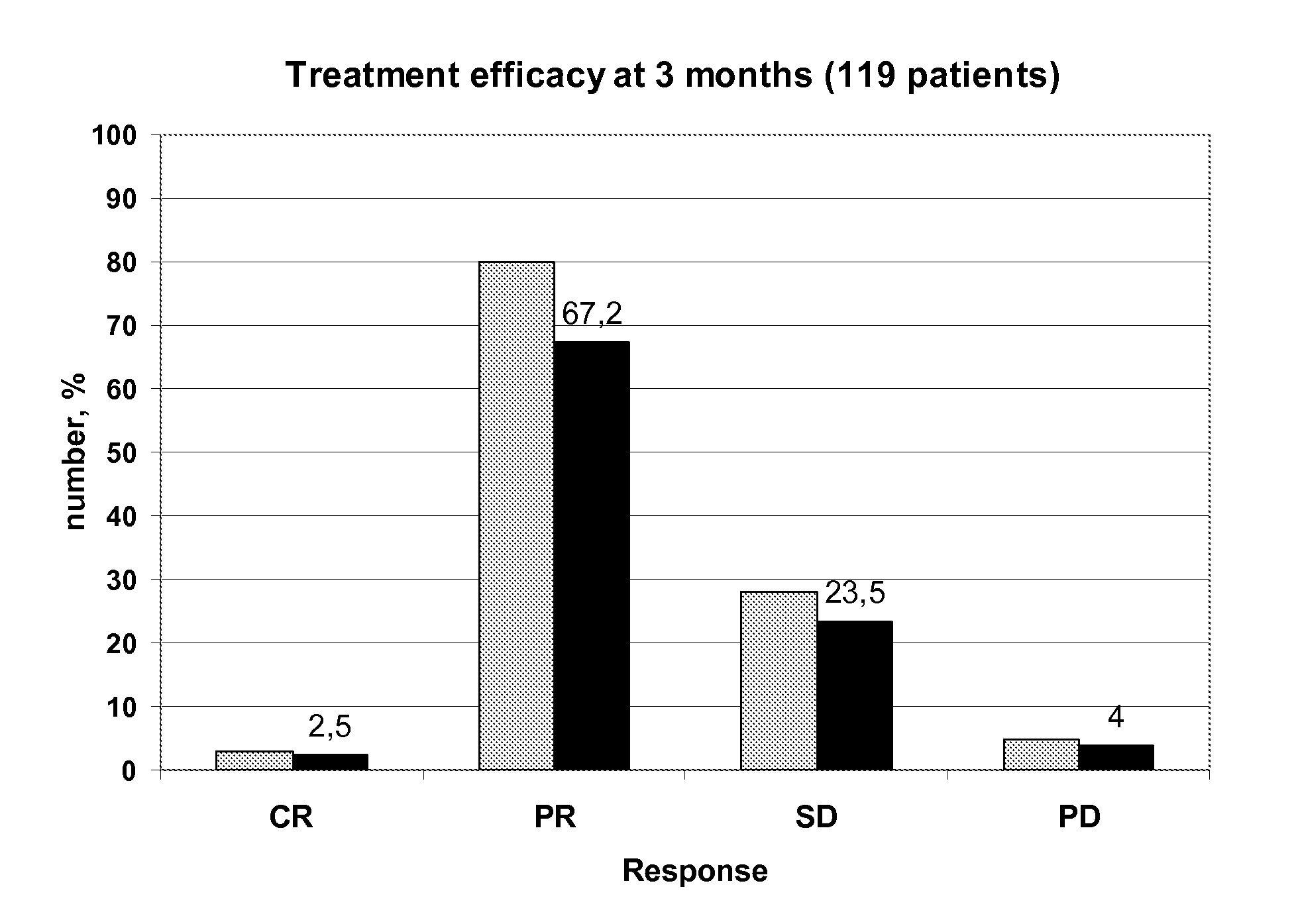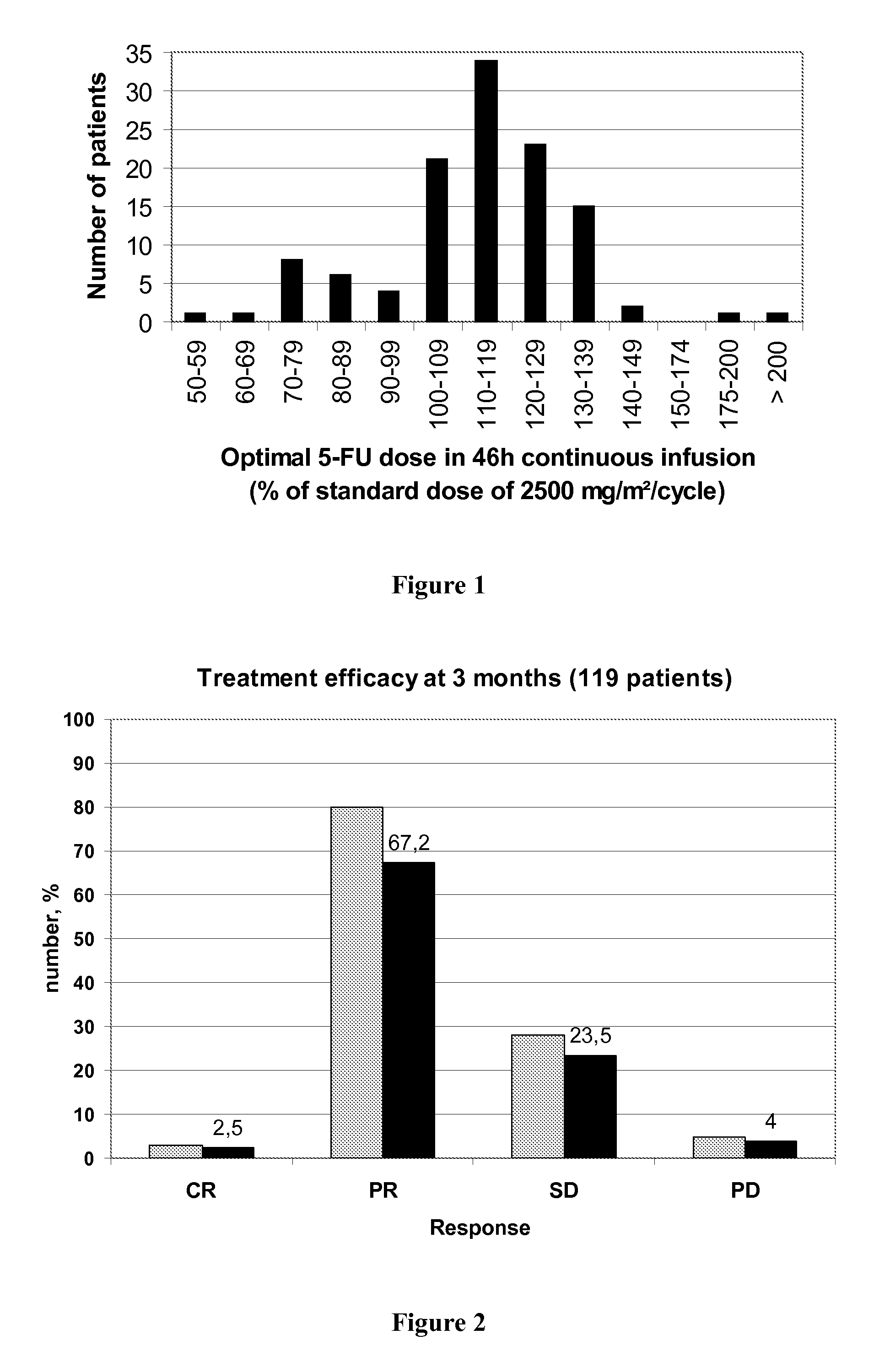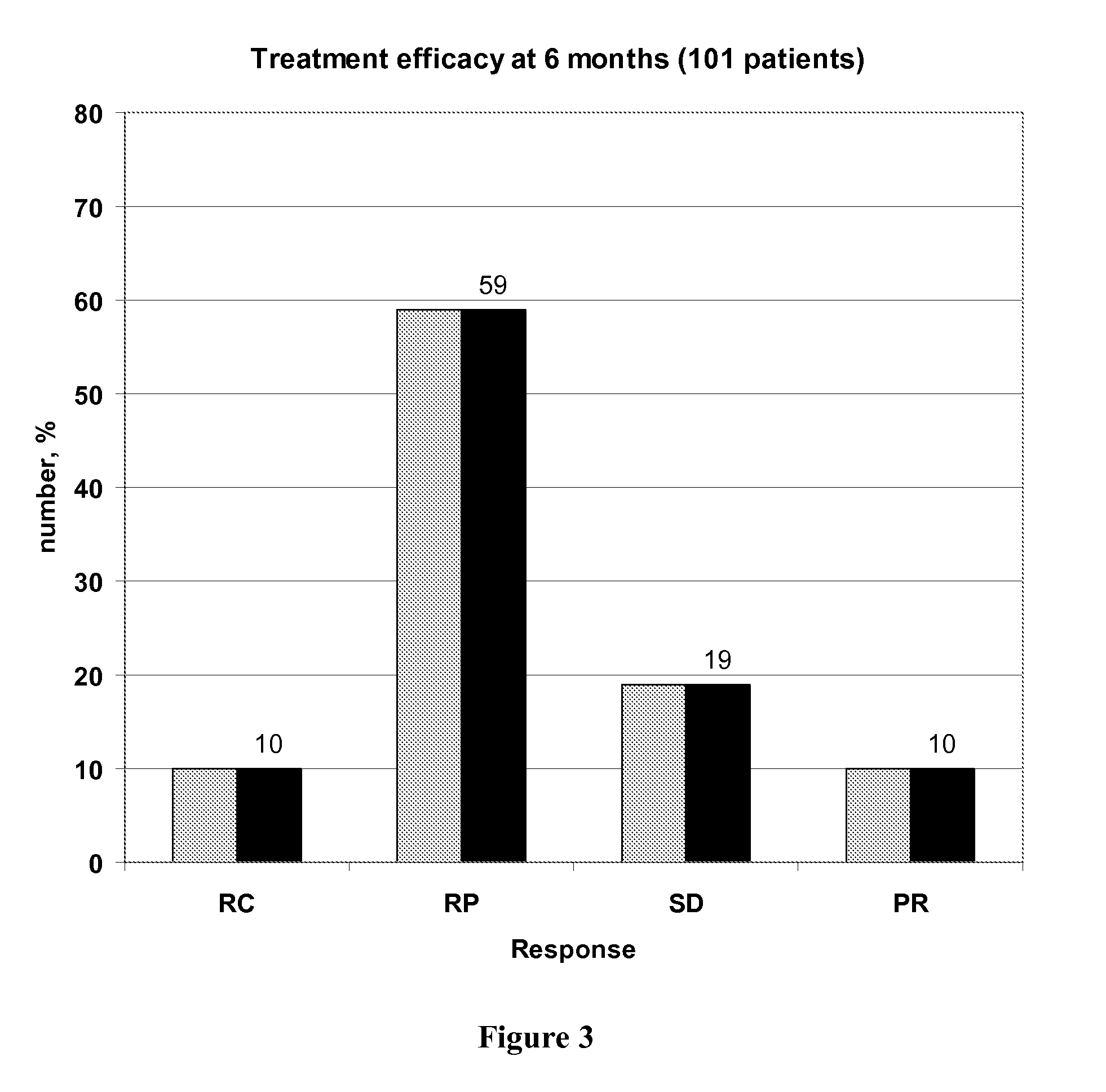Individual 5-fluorouracile dose optimization in folfox treatment
a technology of fluorouracile and individual dose, applied in the field of individual 5fluorouracile dose optimization in folfox treatment, can solve the problems of serious adverse reactions, worse adverse effects, and most drugs may have deleterious effects,
- Summary
- Abstract
- Description
- Claims
- Application Information
AI Technical Summary
Benefits of technology
Problems solved by technology
Method used
Image
Examples
examples
[0139]The claimed method was used in a study comprising 119 patients treated by a FOLFOX regimen in order to determine the capacity of the method to increase efficiency of the treatment and to decrease treatment toxicity.
[0140]Patients and Methods
[0141]Patients
[0142]The features of the 119 tested patients are described in following Table 3:
CharacteristicsNumber of patientsAge (mean ± se)63 ± 10Primary tumorColon79Rectum40MetastasisNumber of sites:17523335>35Metastasis sitesLiver57Lung5Both41>216MetastasisSynchrone109asynchrone10Performance status068137214
[0143]Treatment Administered
[0144]Patients were first diagnosed for the presence of a possible increased sensitivity to 5-FU according to the method described above in the general description.
[0145]Patients were then treated following one of the three FOLFOX 4, FOLFOX 6 or FOLFOX 7 regimen described above in the general description, except that the initial 5-FU dose administered in a 46 hours continuous infusion was adapted if neces...
PUM
 Login to View More
Login to View More Abstract
Description
Claims
Application Information
 Login to View More
Login to View More - R&D
- Intellectual Property
- Life Sciences
- Materials
- Tech Scout
- Unparalleled Data Quality
- Higher Quality Content
- 60% Fewer Hallucinations
Browse by: Latest US Patents, China's latest patents, Technical Efficacy Thesaurus, Application Domain, Technology Topic, Popular Technical Reports.
© 2025 PatSnap. All rights reserved.Legal|Privacy policy|Modern Slavery Act Transparency Statement|Sitemap|About US| Contact US: help@patsnap.com



